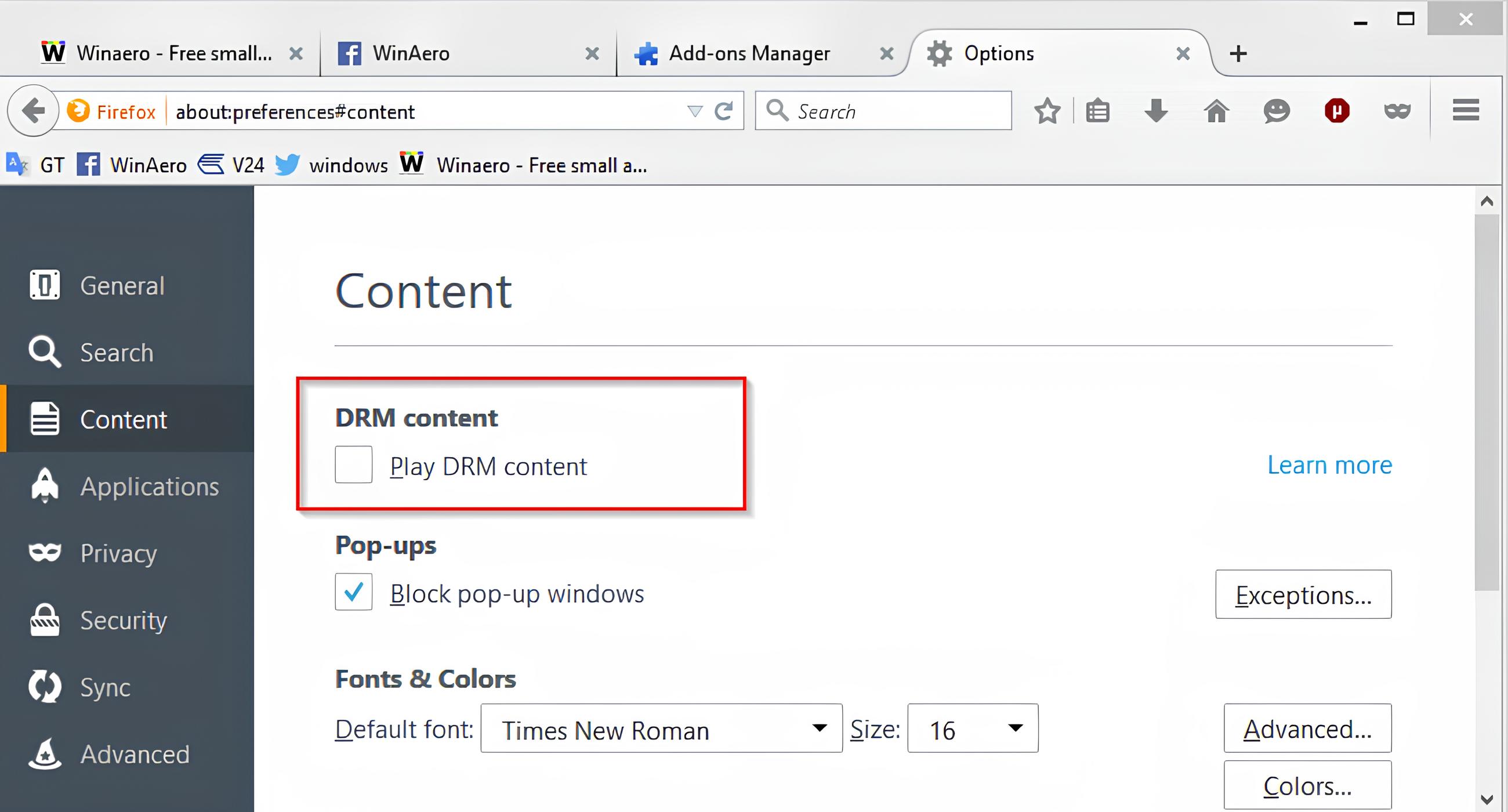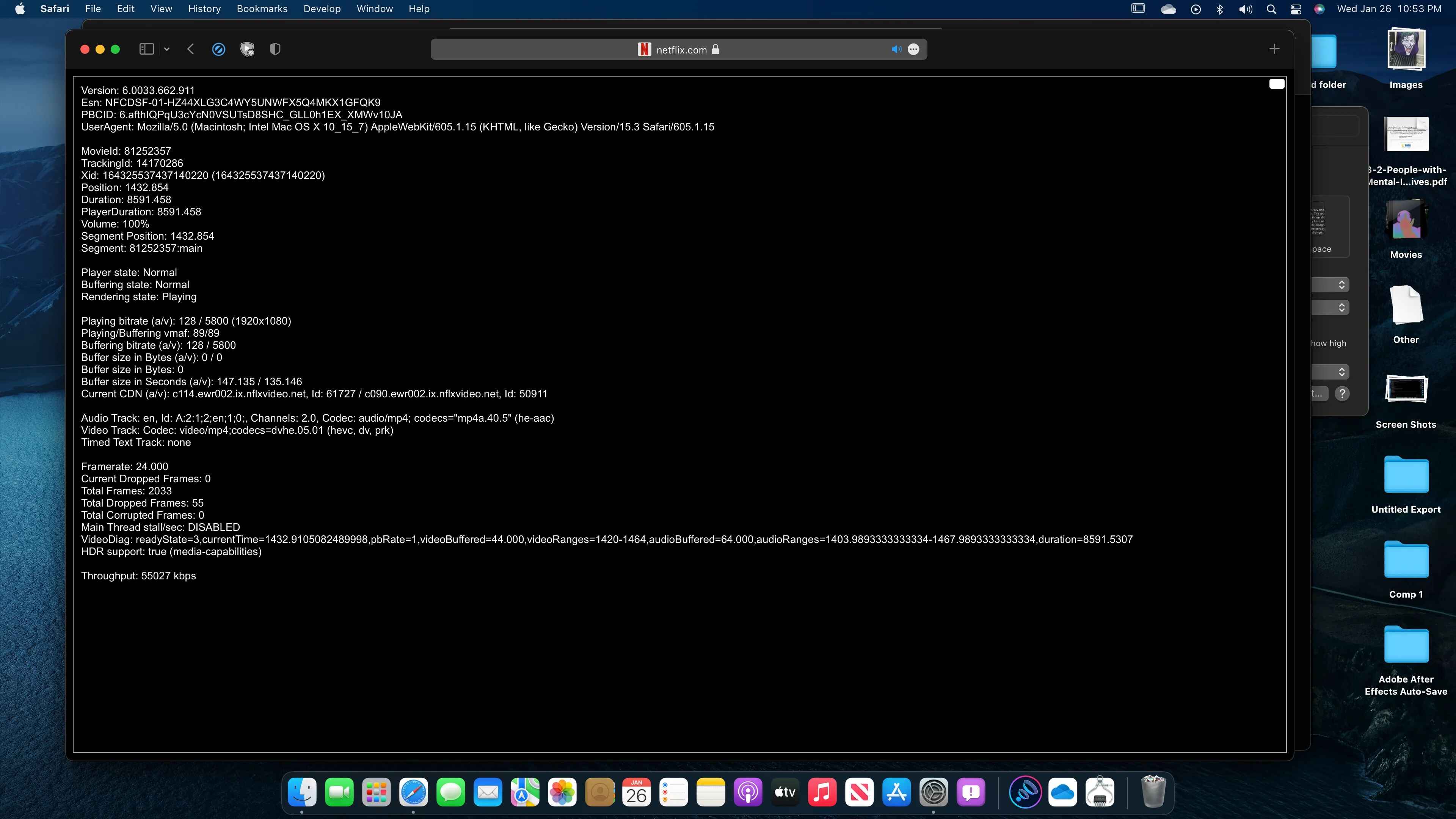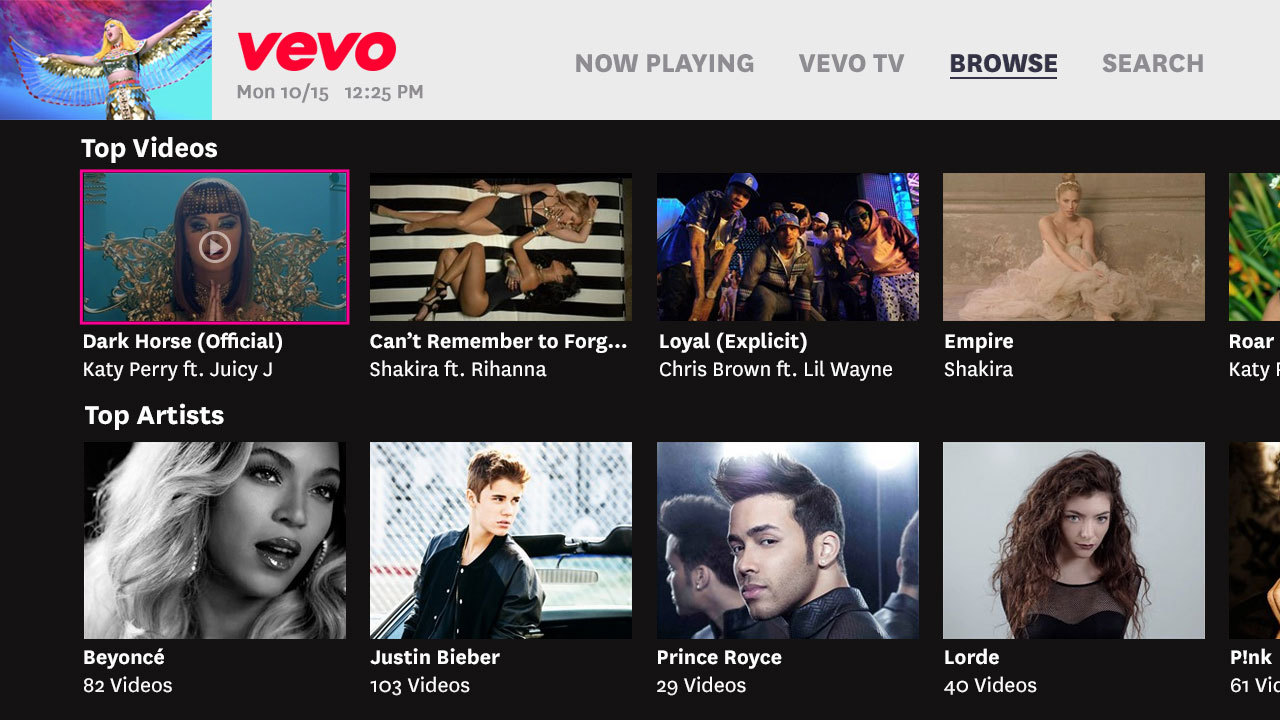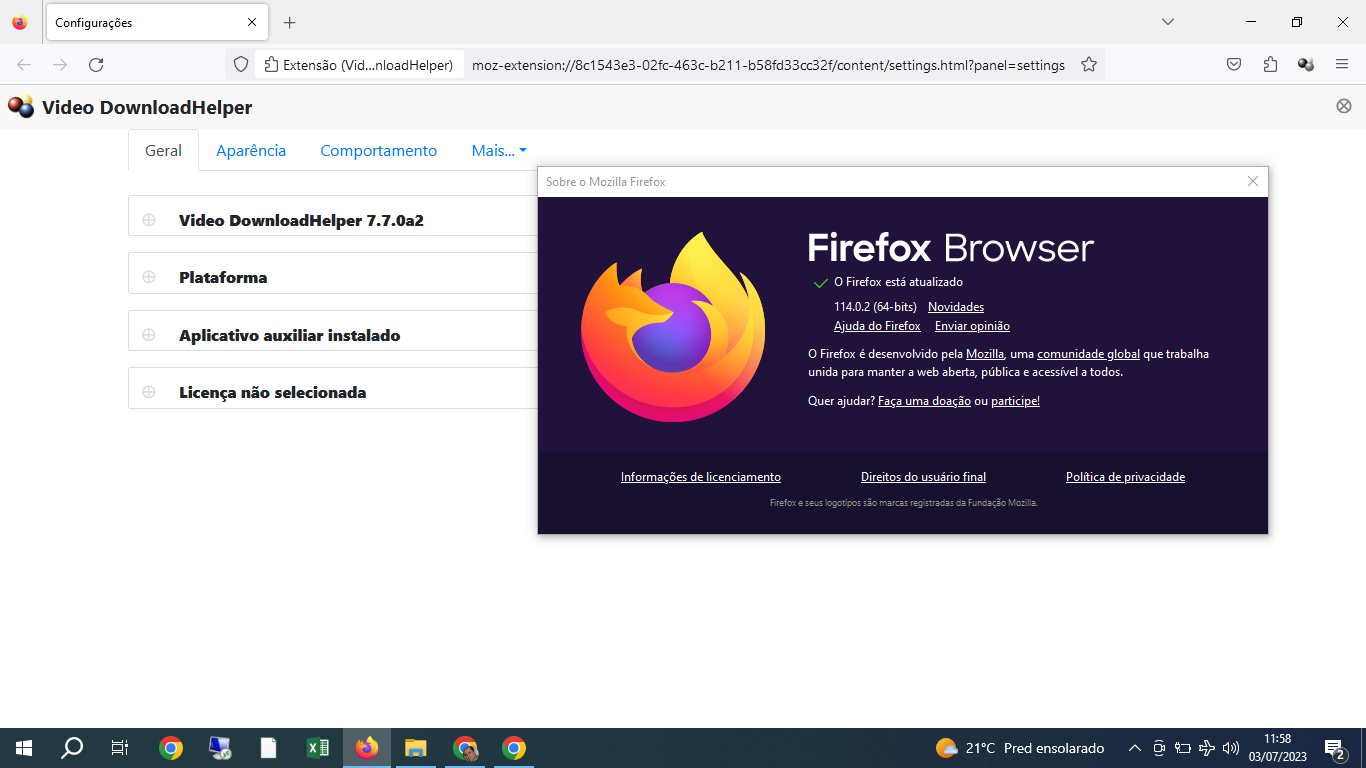Introduction
When it comes to browsing the web, Firefox stands out as a popular choice among users seeking a secure, customizable, and user-friendly experience. As technology continues to evolve, so do the features and functionalities integrated into web browsers. One such feature that has garnered attention is DRM content in Firefox.
Digital Rights Management (DRM) content plays a pivotal role in enabling the secure distribution and consumption of digital media. In the context of Firefox, DRM content refers to the protected audio and video files that require specific permissions for playback. This technology serves as a safeguard for copyrighted material, ensuring that only authorized users can access and enjoy the content.
As the digital landscape expands, the implementation of DRM content in Firefox has become increasingly relevant. It not only aligns with industry standards but also caters to the diverse needs of users who rely on Firefox for their browsing activities. Understanding the intricacies of DRM content and its implications within the Firefox browser is essential for both casual users and tech enthusiasts alike.
In this article, we will delve into the nuances of DRM content in Firefox, shedding light on its definition, functionality, benefits, and drawbacks. By gaining a comprehensive understanding of this feature, users can make informed decisions regarding their browsing preferences and content consumption. Let's embark on a journey to unravel the mysteries of DRM content in Firefox and explore its impact on the browsing experience.
Definition of DRM Content
Digital Rights Management (DRM) content, in the context of Firefox, refers to the protected audio and video files that are safeguarded by specific access controls and encryption mechanisms. These measures are put in place to ensure that only authorized users can access and consume the content, thereby protecting the intellectual property rights of the content creators and distributors.
DRM content encompasses a wide array of digital media, including streaming services, downloadable music, video-on-demand platforms, and more. The primary objective of DRM is to prevent unauthorized distribution, reproduction, and consumption of copyrighted material, thereby safeguarding the interests of content creators and rights holders.
In the realm of Firefox, DRM content is often associated with plugins or modules that facilitate the secure playback of protected media. These plugins, such as Adobe Primetime, Widevine, and others, are integrated into the browser to enable seamless access to DRM-protected content while upholding the necessary security measures.
By employing DRM technology, Firefox ensures that users can enjoy a diverse range of digital media content without compromising the rights of content creators and copyright holders. This approach not only fosters a secure digital ecosystem but also promotes the sustainable distribution of premium content across various online platforms.
It's important to note that the implementation of DRM content in Firefox is in line with industry standards and legal requirements, thereby contributing to a responsible and compliant browsing environment. As the digital landscape continues to evolve, the role of DRM content in Firefox remains integral in upholding the integrity of digital media and fostering a balanced ecosystem for content creators, distributors, and end users.
In essence, DRM content in Firefox serves as a protective barrier that safeguards the rights and interests of content creators while enabling users to access and enjoy premium digital media content within a secure and controlled framework. This definition underscores the significance of DRM technology in preserving the value and integrity of digital content in the modern era.
How DRM Content Works in Firefox
In Firefox, the functionality of DRM content is seamlessly integrated to facilitate the secure playback of protected audio and video files. When a user attempts to access DRM-protected content, Firefox leverages specialized plugins or modules, such as Adobe Primetime and Widevine, to enable the decryption and rendering of the media.
Upon encountering DRM-protected content, Firefox triggers the corresponding DRM module, which initiates the authentication process. This involves verifying the user's credentials and permissions to ensure that they are authorized to access the content. Once authenticated, the DRM module decrypts the protected media, allowing for seamless playback within the browser.
The decryption process is executed within a secure environment, safeguarding the integrity of the content and preventing unauthorized access. This ensures that only legitimate users with the requisite permissions can enjoy the DRM-protected media, thereby upholding the rights of content creators and copyright holders.
Furthermore, Firefox employs robust security measures to prevent tampering or unauthorized extraction of the decrypted content. This proactive approach mitigates the risk of piracy and unauthorized distribution, reinforcing the protection of digital media assets.
From a user perspective, the experience of accessing DRM content in Firefox is designed to be intuitive and transparent. Users can seamlessly stream or download DRM-protected media from authorized sources, knowing that Firefox's DRM functionality ensures compliance with industry standards and legal requirements.
The seamless integration of DRM technology in Firefox underscores the browser's commitment to providing a secure and versatile platform for accessing digital media content. By leveraging DRM modules and encryption mechanisms, Firefox empowers users to enjoy a diverse range of premium content while upholding the principles of digital rights management.
In essence, the functionality of DRM content in Firefox is geared towards delivering a seamless and secure media playback experience, thereby aligning with the evolving landscape of digital content distribution and consumption. This integration reflects Firefox's dedication to fostering a responsible and compliant environment for accessing DRM-protected content, catering to the diverse needs of users while preserving the rights of content creators and copyright holders.
Benefits of DRM Content in Firefox
The integration of DRM content in Firefox yields a myriad of benefits that contribute to a secure, versatile, and user-centric browsing experience. These benefits underscore the significance of DRM technology in facilitating the responsible distribution and consumption of digital media within the Firefox browser.
-
Access to Premium Content: DRM content in Firefox enables users to access a diverse range of premium audio and video files from authorized sources. This includes streaming services, video-on-demand platforms, and other digital media providers that offer DRM-protected content. By leveraging DRM modules such as Widevine, Firefox ensures that users can enjoy high-quality, premium media content while upholding the necessary security measures.
-
Protection of Intellectual Property: The implementation of DRM technology in Firefox serves as a safeguard for the intellectual property rights of content creators and copyright holders. By encrypting and controlling access to protected media, Firefox mitigates the risk of unauthorized distribution, reproduction, and consumption of copyrighted material. This, in turn, fosters a sustainable digital ecosystem that respects and preserves the value of digital content.
-
Compliance with Industry Standards: Firefox's support for DRM content aligns with industry standards and legal requirements, ensuring that users can access DRM-protected media from reputable sources in a compliant manner. This commitment to industry standards reflects Firefox's dedication to providing a responsible and legally compliant platform for accessing premium digital media content.
-
Enhanced User Experience: The seamless integration of DRM technology in Firefox enhances the user experience by enabling secure playback of protected media without compromising performance or usability. Users can enjoy DRM-protected content with confidence, knowing that Firefox's DRM functionality upholds the necessary security and access controls while delivering a seamless media playback experience.
-
Support for Content Creators: By facilitating the secure distribution of DRM-protected content, Firefox contributes to the support and recognition of content creators and rights holders. The protection of digital media assets through DRM technology reinforces the value of original content and encourages the creation and distribution of premium media within a secure and controlled framework.
In essence, the benefits of DRM content in Firefox extend beyond mere technological integration. They encompass the preservation of digital rights, the facilitation of a secure and compliant browsing environment, and the empowerment of users to access premium media content from reputable sources. This underscores the pivotal role of DRM technology in Firefox, aligning with the evolving landscape of digital content distribution and consumption while upholding the principles of digital rights management.
Drawbacks of DRM Content in Firefox
While the integration of DRM content in Firefox offers notable benefits, it also presents certain drawbacks that warrant consideration. These drawbacks shed light on the complexities and implications associated with DRM technology within the Firefox browser, providing a balanced perspective on its impact.
-
Limitations on Content Accessibility: DRM-protected content in Firefox may impose restrictions on content accessibility, particularly for users with specific devices or software configurations. In some cases, compatibility issues with DRM modules or plugins can hinder the seamless playback of protected media, leading to a fragmented user experience. This limitation may pose challenges for users who seek universal access to digital media content across various platforms and devices.
-
Dependency on Third-Party Modules: The functionality of DRM content in Firefox relies on third-party modules or plugins, such as Adobe Primetime and Widevine, to facilitate the decryption and playback of protected media. This dependency introduces a level of reliance on external components, which may impact the overall stability and performance of the browser. Additionally, the reliance on third-party modules raises concerns regarding the transparency and control over the DRM functionality within Firefox.
-
Privacy and Data Security Considerations: The utilization of DRM technology in Firefox raises privacy and data security considerations, particularly in the context of user authentication and access control. While DRM is designed to protect copyrighted material, it also involves the transmission and processing of user credentials for authentication purposes. This process may raise concerns regarding the privacy of user data and the potential vulnerabilities associated with DRM-related authentication mechanisms.
-
Impact on Openness and Customization: The integration of DRM content in Firefox has implications for the browser's ethos of openness and customization. DRM technology introduces proprietary encryption and access control mechanisms, which may conflict with the principles of open-source software and user-driven customization. This impact raises questions about the balance between content protection and the preservation of Firefox's open and customizable nature.
-
Challenges for Content Creation and Distribution: From the perspective of content creators and distributors, the implementation of DRM content in Firefox may pose challenges in terms of content creation, distribution, and accessibility. The complexities associated with DRM-protected media can introduce barriers to entry for independent creators and smaller content providers, potentially limiting the diversity and accessibility of digital media content within the Firefox ecosystem.
In essence, the drawbacks of DRM content in Firefox underscore the nuanced considerations and trade-offs associated with the integration of DRM technology. While DRM serves as a protective mechanism for digital media, its implementation within Firefox introduces complexities related to content accessibility, third-party dependencies, privacy considerations, impact on openness, and challenges for content creation and distribution. By acknowledging these drawbacks, users and stakeholders can gain a holistic understanding of the implications of DRM content within the Firefox browser, fostering informed decision-making and discourse on the evolving landscape of digital rights management.
Conclusion
In conclusion, the integration of DRM content in Firefox represents a pivotal convergence of technology, digital rights management, and user experience. The nuanced interplay of DRM technology within the Firefox browser underscores the multifaceted implications and considerations associated with the responsible distribution and consumption of digital media.
As users navigate the digital landscape, the presence of DRM content in Firefox serves as a safeguard for the intellectual property rights of content creators and copyright holders. It enables the secure access to premium audio and video files from reputable sources, fostering a sustainable ecosystem for digital content distribution. The seamless integration of DRM modules and encryption mechanisms empowers users to enjoy a diverse range of premium media content while upholding the necessary security measures.
However, it is essential to acknowledge the drawbacks associated with DRM content in Firefox, including limitations on content accessibility, dependencies on third-party modules, privacy considerations, and implications for openness and customization. These drawbacks underscore the complexities and trade-offs inherent in DRM technology, prompting a balanced examination of its impact within the Firefox browser.
Moving forward, the evolution of DRM content in Firefox necessitates a holistic approach that balances the protection of digital rights with the preservation of user accessibility, privacy, and customization. By fostering dialogue and innovation in this domain, Firefox can continue to uphold its commitment to providing a secure, compliant, and user-centric platform for accessing digital media content.
In essence, the integration of DRM content in Firefox reflects a dynamic synergy between technology, content distribution, and user empowerment. By navigating the complexities and opportunities inherent in DRM technology, Firefox remains poised to shape a responsible and inclusive digital ecosystem that respects the rights of content creators while delivering a seamless and secure browsing experience for users worldwide.

























